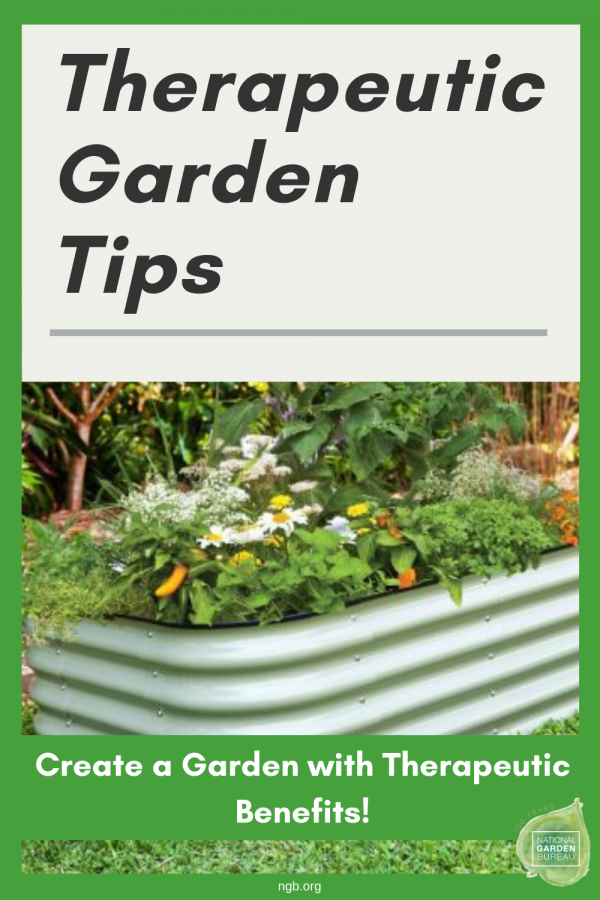Originally appeared at National Gardening Bureau
Written by Lesley Fleming, Nova Scotia Horticulture for Health Network
Therapeutic gardens, typically seen at healthcare facilities, are “designed for use as a component of a treatment, rehabilitation, or vocational program… to meet the needs of a specific user or population…to accommodate participant’s goals and to facilitate people-plant interactions” (American Horticultural Therapy Association, 2017). Also defined as enabling gardens, they are used by horticultural, recreation, occupational, and physical therapists working with elders, veterans, at-risk youth, and other populations for physical rehabilitation, strengthening of limbs, and exercise regimens.
Therapeutic gardens provide a plant-rich site for delivery of services addressing a range of health goals.
Some therapeutic gardens are classified as restorative, where the primary intent is to provide mental repose and restoration, distinct from physical healing. Meditation, contemplation, and sensory gardens fall within this category in Diehl’s framework for healing gardens (2013). Restorative gardens are used for example, with people who have experienced trauma, grief, cancer, addictions, or mental health challenges who benefit from cognitive, emotional, or psychological restoration in passive, nature-focused environments (Fleming & Kirby, 2018).
All types of therapeutic gardens seek to provide health improvements be they physical or mental, and are recognized by distinct characteristics. Garden design elements address specific health goals for those who will be using the garden. Therapeutic gardens used in healthcare settings may be used by multiple populations or may be designed and used primarily by a single population – veterans, people living with dementia, or pediatric patients. Universal design and accessibility principles as well as evidence-based research guide therapeutic garden design (Cooper Marcus & Sachs, 2014; Therapeutic Landscapes Network, 2020). Many of these same principles can be adapted for use by the home gardener.
Therapeutic garden ideas for home gardens:
 |
 |
 |
Determine if a specific priority, health focus, or function is desired. For example, do you want a sensory garden or a sanctuary garden on one where you can do physical exercise? Then research the type of therapeutic or healing gardens that can provide information/design specifics/ideas. Quick Tip: Learn how to create your own scented garden.
 |
 |
 |
Consider a professional garden designer experienced in translating garden elements into desired preference or function with enabling or restorative attributes (labyrinth for meditation, long views, or winding paths used for contemplation gardens for example) Quick Tip: This healing landscape network website offers a lot of info and lists of gardens and their designers.
 |
 |
 |
Think about safety and accessibility; these may become crucial throughout life stages (raised beds, vertical gardening, ergonomic tools, wheelchair or walker friendly path surfaces). Quick Tip: Read about making your own vertical gardens and Read about how to build a simple raised bed.
 |
 |
 |
Create a plant-rich environment, incorporating preferences for edibles and/or ornamentals, avoiding poisonous or thorny plants but which are supportive of multi-function activities (gathering spot, shade, easy access, plants used for crafts and year-round color). Quick Tip: Adaptive gardening adopts several ideas to make a garden more accessible as one’s life situation changes.
 |
 |
 |
Investigate healthcare facilities and their therapeutic gardens and therapeutic horticulture programs for loved ones who may be hospitalized, living in dementia care, hospice, or rehabilitation centers. Quick Tip: Many of the therapeutic gardens listed here can be visited and would be happy to tell how they developed their own therapeutic gardens.

